Designing, printing, and selling coloring books can be a profitable side income or even a full time living. We show you what you need to do, from getting an idea for your book to making your first sale.
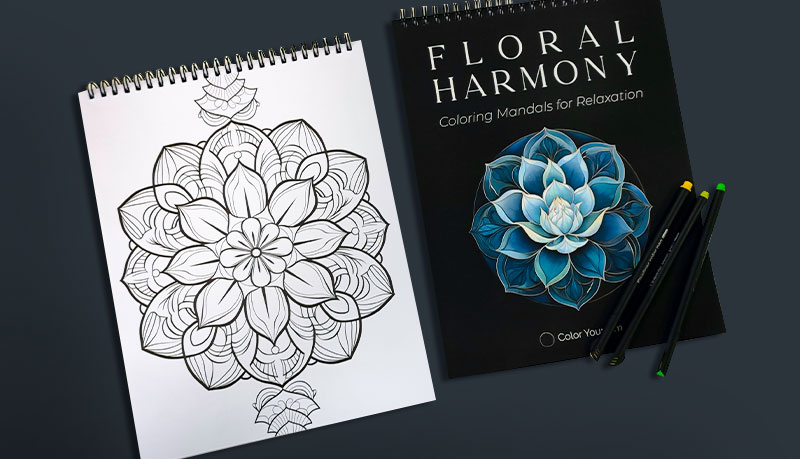
Coloring book printed by QinPrinting
One of the most popular and profitable genres in the self-publishing industry is the coloring book. With their widespread appeal to both children and adults, coloring books offer a pleasing and relaxing pastime that can also enhance cognitive and motor skills. The market for coloring books remains robust and continually welcomes new talent. Themes can range from simple children’s designs to complex, adult-focused patterns such as mandalas, florals, and abstract art. And increasingly, people use coloring books as a tool for stress relief and meditation, which has driven demand further. If you’d like to make a coloring book to sell, whether to “test the waters” or as part of a wider business plan, we will show you how. Our comprehensive guide includes tips on artwork creation, choosing the right paper and binding, and leveraging social media for effective promotion.
Do coloring books sell well?
Children’s coloring books are consistently good sellers and have been since the world-famous illustrator Kate Greenaway published the very first one back in 1879. Adult coloring books burst on the scene in 2014 and enjoyed a peak of sales in 2016. Since then the market has settled, but it has not gone away, and adult coloring books — both traditionally and independently published — continue to sell millions of copies each year.
Is making coloring books profitable?
This is one of those questions we can only answer provisionally because whether you can make a profitable business selling your coloring books depends on a range of factors which we can’t control for you. But — assuming you have the talent for it, put in the work, produce high-quality books, and devise a rational marketing plan — there’s a good chance of making money from your coloring book sales. So, how much can you realistically expect to make?
The two biggest online markets for coloring books are Amazon and Etsy. But there are other contenders out there, and some enterprising coloring book creators have made even higher profits, by-passing the stores altogether and selling directly to the public via their websites and social media platforms such as Instagram. The most successful sellers can reap rewards of $10,000+ a month. But balance that against the fact that the worst sellers may bring in under $100 a month. In the mid-range, if you work hard and are consistent in your marketing efforts, you should be able to make a profit of $500 to $3,000 per month once you’ve published a handful of titles and established your place in the market.
While publishing via Amazon using their in-built print-on-demand (POD) services is an option, it’s not the best. It’s a good market but a competitive one. And it’s one — like the craft sector — in which quality matters and the better the product you can produce, the more likely you are to generate a sustainable income from sales. The successful Etsy sellers, for example, most often get their books printed by an offset printer such as ourselves. The other option is to handcraft each book individually, but that is very slow and slashes the profit margin. Offset printing — even a short run of just 100 books — is the best road to take as you’ll get an exceptionally high-quality product at a competitive cost-per-unit price which will still allow you to make a good profit on each sale.
It may be a good idea to order a short run of 100 copies of your coloring book while you test out your marketing and sales strategy and then order a larger number once you’re confident of your projected sales figures. Working with us, the more copies you print in one go, the less you’ll pay per unit and so the higher your profits per sale. Let’s take a closer look at how this works.
For example, let’s say you design an adult coloring book which has 32 pages plus the cover. We print 100 copies for you using 250 gsm / 100 lb matte art paper with matte lamination on the outside for a really professional look and feel; and we print the interior on 100 gsm / 70 lb offset paper to make your line drawings crisp and clear, on pages that will take coloring pens and pencils well. We bind the whole thing using saddle stitching, the most popular binding for this kind of book.
You’d pay about $310 for printing 100 copies, which is equivalent to $3.1 each. Shipping to the US in this case would be another $130 by airfreight, bringing your price-per-copy to $4.4. You can easily sell each book for $9.95, so you’d make a profit of $5.55 per book minus your overheads (design and file creation, for example). Overheads are a one-off investment that you recoup over time at a rate of your choosing. So, assuming you sell all 100 copies, and you wanted to make back $100 of your original $500 designer fee on this first short run, you’d make $455.
Now, once you’ve paid back your overheads, if you ordered 1,000 copies, we’d charge you about $548 plus $1200 (if you choose sea shipping, the shipping cost can be reduced by half), which is equivalent to $1.748 per copy, shipped. But you can still sell them at $9.95 each, boosting your profit margin on each sale to $8.202 and an overall profit of $8,202.
An order of 5,000 copies in a single run, shipped by sea to the US, would reduce the price-per-unit to $0.72, meaning you’d make $9.23 on each book and $46,150 if you sold them all.
Realistically, selling 5,000 copies of an adult coloring book is a tough call. We give you that figure just as an example. But the rules of marketing dictate that if you can sell 100 copies, you can sell 1,000. And the trick with self-publishing is to build up a back catalog of several titles. You may plow your first profits back into your next two books and so on until you have between 10 and 12 titles on sale. That’s when you can start to see real profits. 12 titles selling 100 copies each per month on average could make you a credible income of around $10,000 a month after overheads. Then you can sit back and collect residual income or expand your horizons and start to build your personal self-publishing empire!
Disclaimer: whether you make sales and profits depends on several factors beyond our control, and the above examples are for reference only. We cannot guarantee that you will make a profit on your investment.
How much does it cost to produce a coloring book?
You can get an idea of printing price by checking our super-easy at-a-glance chart.
| Page count | 100pcs | 500pcs | 1000pcs | 5000pcs | 10000pcs |
|---|---|---|---|---|---|
| 20pp + 4pp | Unit $2.62 Total $262 |
Unit $0.72 Total $360 |
Unit $0.44 Total $442 |
Unit $0.26 Total $1,308 |
Unit $0.23 Total $2,314 |
| 32pp + 4pp | Unit $3.10 Total $310 |
Unit $0.87 Total $435 |
Unit $0.55 Total $549 |
Unit $0.34 Total $1,696 |
Unit $0.31 Total $3,103 |
- Please note that all prices are EXW our facility and do not include shipping costs.
- Cover: 250 gsm / 92 lb coated cover paper with matte lamination
- Interior: 100 gsm / 67 lb uncoated text paper
- Saddle stitch
- Cover and inner: full color printing
Now, we’ve already mentioned overheads. So, let’s dive a bit deeper and look at the overall costs of producing your coloring books. Because before you can print the books and sell them, you must first design and format them.
There are three stages to go through if you want to make a coloring book to sell. We’ll list them here first. Then, we’ll look in more detail at what’s involved in each one.
- Stage One: getting ideas; creating, sourcing, or commissioning artwork; design and formatting the book ready to print
- Stage Two: choosing a printer; selecting materials, binding style, and size of the run; submitting the print-ready files; checking the proofs; printing your coloring book
- Stage Three: marketing, sales, and distribution
You can handle all of this yourself, or you can outsource some or even all the work to third parties. Most successful independent coloring book publishers do some of the work themselves — at least when starting out — and outsource other aspects to others. But let’s breakdown what’s involved in each of these steps.
How to get ideas and develop a theme for your coloring book
The bestselling coloring books aren’t just random collections of black-and-white images. They are carefully curated collections of unique images built around a core theme. This is true whether it’s a coloring book for kids or adults. But how do you get ideas for your coloring books and develop them into themes?
The first thing is to look at the bestselling coloring books that have already been published. Do a bit of research and spend some time examining each one. Ask yourself the following questions:
- How many images are there?
- Are the images complex or simple?
- Who might this coloring book appeal to? Adults or children? men, women, both? Music lovers? Stamp collectors? Moviegoers? Another group?
- Is there a clear theme? If so, how broad or narrow is it? For example, a broad theme might simply be “The natural world”; and a narrow theme might be “Backyard birds of Illinois”
- Why do you think the author has chosen the images in the book? If you made a book with a similar theme, what images would you choose?
- What improvements could you make if the book were yours?
As you do this research, you’ll begin to get all sorts of ideas of your own. It’s a good idea to jot them down in a notebook or keep a running list on your phone. Once you’ve come up with a few — say, a dozen or more — you can begin to work through them to choose the best one for your book.
Here are a few examples of broad themes that could work well for any coloring book. We’ve divided them into children and adults. But several of them could be adapted for any age group.
Children's coloring book themes
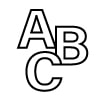
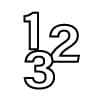
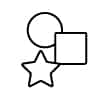
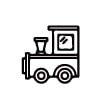
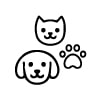
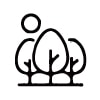
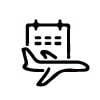
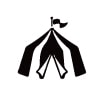

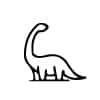
Adult coloring book themes
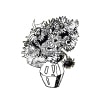

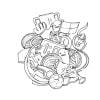
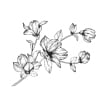
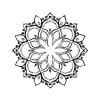

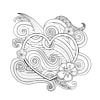
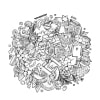


We’re sure that with a little exploration and thought, you’ll soon latch on to an original idea that would make a good theme for a coloring book. Don’t rush this step. The coloring book market is lively but, as we’ve said, it’s also competitive. So, give yourself the advantage by taking time to hit on and develop something exciting and new, or at the very least, an original twist on a favorite idea.
Creating, sourcing, or commissioning artwork for your coloring book
Once you have your theme, you’ll need to decide how many images you want to include — which will also affect the number of pages in your book — and the order you want them in. That done, you’ll need to create, source, or commission the artwork. Let’s look at each of these options.
- Create the artwork yourself: if you have artistic talent and a good eye for graphic design, there’s nothing to stop you from creating your own images from your coloring book. You could make the images using traditional materials such as paper and ink and then digitize them by scanning them into your computer, or you could generate them using digital design software like Adobe Illustrator or InDesign.
- Source artwork from online collections: if you don’t feel confident with creating your own artwork and you don’t have the budget to pay an artist to make it for you, you can search the various online collections for suitable images. These may be free with no attribution required. For example, images like these from Pixabay.com. Or you can pay for a license to use images for commercial purposes. In that case, you could try pages like these from Shutterstock; these images from Pixabay; or just do a Google search for “free black and white line drawings online” and see what you can find. The most important thing if you choose this route is to remember that you’ll need to read the licensing agreements with care and pay or attribute accordingly. If you don’t, you risk getting into a lot of expensive trouble down the line for breaching copyright.
- Commission a professional to create the artwork for you: if you have the available budget, this is often the best choice. If you have gone to all the trouble to research and come up with an original theme, it makes sense to do it justice with original artwork. How much does it cost to pay an artist or graphic designer to do this work for you? Perhaps not as much as you might imagine. But you should expect to pay at least a few hundred dollars for original line drawings, and more depending on the complexity and number of images you need. Shop around on sites like Fivver, Upwork, 99Designs, PeoplePerHour, and other freelancing sites until you find a solution that works for you.
Now you’ve got your theme and created artwork to fill the pages of the coloring book, you’ll need to prepare the layout and the design ready for printing. This is the point at which we’d encourage you to talk to us, whether you are going to do this yourself using book design software or pay a graphic designer to prepare the files for you. We can offer all kinds of practical advice about paper stock, coatings, covers, bindings, inks and more, which will make your job — or your designer’s job — much easier. We can also provide you with book templates to guide you as you go. We make no charge for this kind of support. But we believe strongly in giving the best customer service possible. Either way, now is the time to look at design and layout for your coloring book.
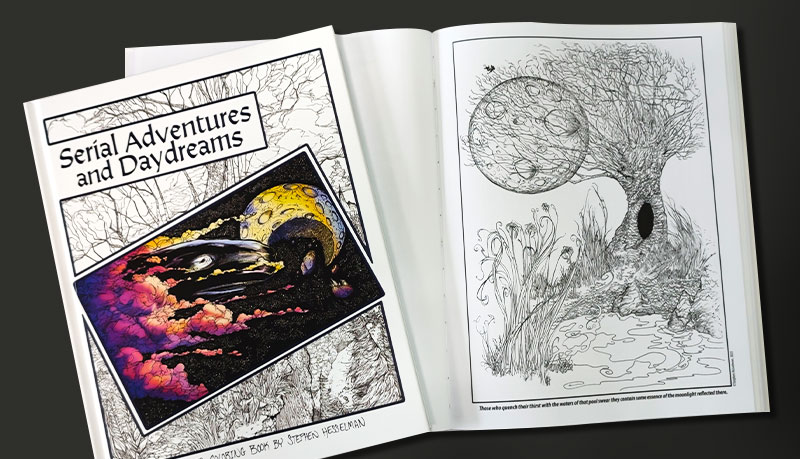
Coloring book printed by QinPrinting
Selecting materials and binding options for your coloring book
Choosing the right paper and binding method for your coloring books is an important step. Coloring books have particular requirements, such as paper that can easily be drawn on with colored pens and pencils without the ink either failing to adhere to the surface or bleeding through to the other side of the page. And the binding, especially if it’s designed for children, must be both robust and flexible.
• Interior pages
Choosing the right paper for your coloring book’s interior pages is essential to delivering a high-quality product that meets your customer’s highest expectations. For the interior pages, the standard size of 8.5″ x 11″ in either portrait or landscape orientation works well. It’s important to use plain white offset paper with an absorbent surface, typically weighing between 100 gsm (68 lb) and 140 gsm (95 lb). This type of paper, also known as uncoated wood-free paper or UWF, is ideal because it absorbs ink from felt-tip markers without bleeding through, maintaining the integrity of the line drawings. Offset paper’s natural brightness and opacity also enhance the clarity of your printed designs, making it our preferred choice for coloring books.
• Cover paper
The cover of your coloring book requires a different kind of paper, one that is thicker and more durable to protect the interior pages and make the book visually attractive. Coated art paper, which can be either gloss or matte, is what we recommend for covers because of its sturdiness and the vibrant finish it gives to printed designs. Depending on whether you want to print on both sides of the cover, you can choose single or double-coated paper. Typically, we’ll make covers from paper weighing between 250 gsm (168 lb) and 300 gsm (200 lb), providing durability and a professional look. This heavier paper type not only adds to the book’s overall quality but also makes it more resistant to wear and tear.
• Binding options
When it comes to binding your coloring book, you have several options, each with its advantages. Saddle-stitch binding, which involves us folding and stapling the pages along the spine, is economical and works well for books with fewer pages (ideally up to 48). Perfect binding, similar to paperback books, is suitable for larger volumes, providing a polished, durable spine by gluing and sewing the pages and cover together. Wire-O and spiral binding, although less common, offer the benefit of allowing the book to lay flat and pages to turn 360°, which can be convenient for coloring. For a premium feel, for hardcover binding we’ll sew and glue the pages into a hard case, ideal for creating a long-lasting, robust product. Your choice will depend on your target market, budget, and the style of the coloring book, to make it both functional and good-looking.
Preparing your coloring book for printing
If you engage the services of a professional graphic designer, they should understand everything that’s needed to prepare your digital files for offset printing. But if you are doing it yourself, you might find the following practical tips helpful. But in any case, if you decide to print with us, our team of experts will manually check all your files and artwork before going to press. If we find any errors or issues, we’ll let you know, explain what the problems are and how to fix them, and offer you any other support needed to make sure that your coloring book comes out perfectly from the press.
- Export your files as vectors in PDF format for the best results. Our recommended software options are Adobe Illustrator or Adobe InDesign. These will also allow you to convert your color space from RGB to CMYK which you will need to do for offset printing
- If you can’t deliver vectors — say, if you’re exporting bitmaps from Photoshop — then make sure the resolution is at least 300 DPI. With vectors, you needn’t worry about resolution, but all other images must have a high definition to tolerate resizing without becoming fuzzy and “pixilated”
- You’ll need to add a “bleed zone” of 3 mm around all your pages. A bleed is an extended zone at the periphery of your artwork, which falls outside the area that your final page will cover. Once your pages are printed, we’ll cut them to the exact size needed for your comic book format. This “bit extra” gets cut off and makes sure that the final image fills the page without any of it being lost. Bleed zones should be marked as red lines
- Inside your bleed zone, don’t forget to mark the “trim lines”. These should be green and will define the final dimensions of the finished page. Make sure that any necessary elements of your images stop at least 4 mm short of the trim line
- Also, as your pages are meant for coloring, we recommend you make each interior page with a 15 mm (about half an inch) inner margin and keep all coloring images within that limit. Otherwise, the area near the spine may not be easily accessible for coloring in.
- Most coloring books are bound using the saddle stitch technique, but some authors prefer the spiral bound style. If you choose a spiral bound coloring book, leave an added margin of at least 6 mm on the edge that we’ll bind the book to allow for the holes.
Once you deliver your files and we approve them, we’ll send you a digital “proof” copy so you can check you’re completely happy before we put the ink on the paper. If you wish, we can also send you a single digitally printed sample for a small additional fee. This won’t be of the same quality as the finished offset book, but it will be very close, and some clients like to hold a sample in their hands before they give us the green light to set the press rolling.
But while we hope you’ll choose to print your coloring book with us, we understand that there are other printers out there! So, let’s look at the next stage in more detail, starting with how to choose a printer to work with on your coloring book project.
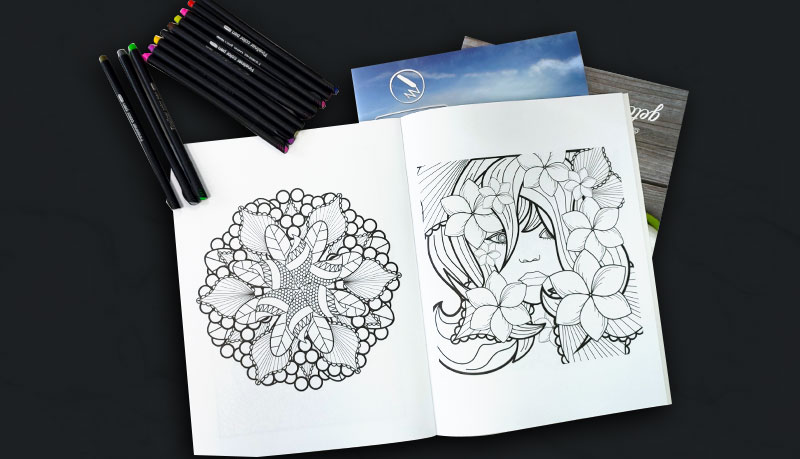
Coloring book printed by QinPrinting
How to choose a printer for your coloring book
If you do a quick Google search for printing services, you’ll find thousands of results, whether you look locally or worldwide. So, how do you choose between them? First of all, as we’re assuming that you’re interested in building up a business — even part time — making and selling coloring books, we won’t talk about digital-only or print-on-demand services.
Why? Because while the quality of the print may be adequate for a genre paperback novel which will be read once and then tossed aside or donated to the thrift store, it’s not good enough for a book based on artwork. Also, you won’t get the best choice of the right kind of papers for a coloring book and the price-per-unit is expensive compared with offset printing. Obviously, if you’re in business, then you want to keep production costs down without comprising quality so that you can increase your profit margin and encourage more sales. Really, the only viable solution in that case is to choose an offset printer.
What to look for in an offset printing service:
- Time and experience: it’s a good idea to choose a printing company that has stood the test of time and accumulated the benefits of experience. This will help to make sure that they do the job quickly and efficiently, and that you get an excellent result. At QinPrinting, for example, we have over 25 years’ success in the industry and a dedicated team of expert staff who have been with us from the start.
- Technology and working protocols: always check that the printing company you work with maintains and updates their technology — both the digital side and the actual printing machines. The industry is constantly improving and developing better tech and methods, so you should take advantage of the latest possibilities. We only use state-of-the-art design and printing technology here, for example, and we have a continuous and rolling program of maintenance and upgrades so that we’re always at the top of the game.
- Expertise and helpfulness: in effect, anyone can buy a building and fit it out with a few machines; but not everyone has developed real expertise or the ability to explain and share that expertise with customers. We do, of course, but you should always talk to your printer before you commit to make sure that you can feel confident in their skills and knowledge.
- Quality and range of materials: digital and print-on-demand services have only a limited range of materials, paper stocks, and other resources. A good offset printer should offer a comprehensive array of materials for both printing and binding your books or other projects. Here at QinPrinting, for example, we have a complete range of papers, coated and uncoated, white and color, a selection of high-end finishing techniques — such as gloss, matte, and soft-touch lamination, embossing, debossing, die-cutting, foil stamping, and more — and lots of binding solutions from perfect bound to saddle stitch to spiral bound and more. We also offer FSC-certified stocks, biodegradable inks, and recycled materials.
- Peripheral and associated services: many printers, only print. Choose a printer who goes the extra mile and offers a range of additional and peripheral services. For example, we provide free file and artwork checking as standard, along with storage and distribution options for a range of products, and a named, dedicated consultant who will guide you on your printing journey every step of the way.
- Quality of customer care: we would advise you to investigate the level of customer service and after care that a printing company offers. For us, this is one of the most important aspects of our business. We pride ourselves on our personalized customer support.
- MOQs (minimum order quantities) and price-per-unit costs: as we’ve already seen, when you work with an offset printer, you get the best cost-per-unit deal compared to a digital printer or a POD service. But most offset printers impose MOQs of 500 or even 1,000 copies. When you’re just starting out with your coloring book business, that may be too high. That’s why we’ve set our minimum order quantity at just 100 copies, with no compromise on quality and still at a very competitive price.
- Storage, delivery, and distribution options: most printers may not handle storage and distribution. We do. If you want us to store your printed coloring books for you and deliver them as you need them, we’ll do that for up to a year. And if you’d like us to deliver them directly to your chosen distributor (for example, an Amazon warehouse) we’ll do that, too.
Obviously, we hope that you’ll choose us to print your coloring books, but it is always wise to “shop around” and check out a number of potential services. Still, we’ve set the bar high here at QinPrinting, and we’re confident that you’ll be hard pressed to find another service with the full range of products and services that we have to give.
Marketing your coloring books and making your first sale
As we’ve already pointed out, the coloring book market is a potentially highly profitable one; but exactly because of that, it’s also a competitive vertical. So, to guarantee sufficient sales, you’ll need to develop a functional marketing strategy. There are several ways that you can approach this and how you develop your promotional and sales structure will depend on your personality, your skills, and your budget. A few authors outsource all their marketing to an agency. Others do everything themselves. Most handle certain elements independently and outsource others. But here are some of the most effective marketing strategies you can try:
- Website and blog: popular among authors of all kinds as a marketing strategy is to set up a dedicated author website and regularly update a blog with articles which will be of interest to the people likely to buy your coloring book. While this is a slow burn strategy — because it takes months at least to build out a website with sufficient high-quality content for it to begin to attract search engine traffic — it can be very effective in the long term; especially if you link your website and blog with branded social media accounts and build a strong community around your business and products.
- Paid advertising on social media and e-commerce stores: it’s often prohibitively expensive to rely solely on paid advertising when you’re just starting out; but it can be a useful strategy to add into the mix to get the word out there, attract the first visitors to your blog and e-commerce outlets, for example, and even make your first direct sales. How to create, manage, and monitor a success advertising campaign is quite a steep learning curve but can pay dividends in the future once you start to get it right.
- Direct sales at events, markets, and conventions: one of the most powerful ways to sell your coloring books can be directly to the public at book fairs, local markets, events, and conventions. You can also try asking local stores if they’ll carry a few copies on a sale-or-return basis and split the profits.
- ISBNs, barcodes, and getting your books into high street bookstores: if you invest in an ISBN number and a barcode for your coloring books, you can register them with the mainstream distributors and get them listed in the catalogs from which the high street bookstores select their stock. You can buy ISBNs from Nielsen in the UK and Bowker in the USA.
- Social media marketing on Facebook, Instagram, and others: we’ve known successful coloring book creators who have done well selling exclusively on social media by building up a following of enthusiasts and developing a community around their brands and products. Again, it can take some time to develop the knowledge and skills to make this work, but if you have the right personality and the time to dedicate to the task, this can be an effective and fun way to sell your books.
Of course, you may discover other marketing methods that work for you, and most coloring book creators use a “mix-and-match” approach. There’s no harm in experimenting and honing in what works and dropping what doesn’t. But if you’ve any head at all for business — and you’ll need to think like a business person if you want to sell your coloring books — you’ll enjoy this process and with time and a little effort, create a marketing model that works for you.
Are you ready to make a coloring book to sell?
Then let’s talk! It may seem like quite a lot of work—and it is!—but it needn’t be overwhelming if you just take one step at a time. Once you have an idea for your coloring book and you’ve sourced or created your artwork, get in touch. We’ll be happy to offer you free advice about the technical choices that will best suit your project, such as binding styles, paper types, cover options, and more. Our experienced team is here to guide you through each stage of the process, from initial concept to final product. We also provide insights into marketing strategies and distribution channels to help you reach your target audience effectively. We look forward to hearing from you and even more to helping make your coloring book business a great success!





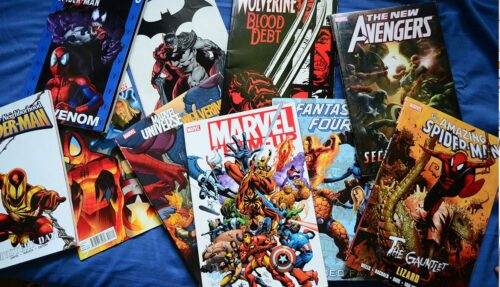

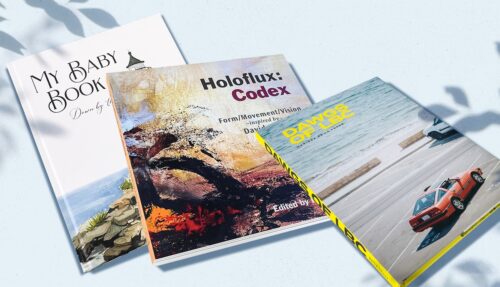
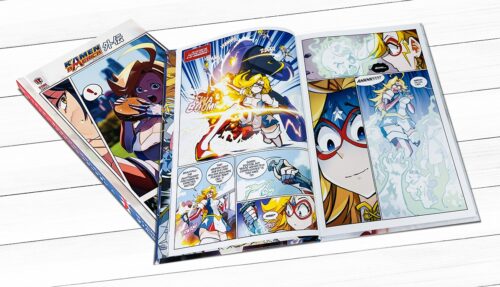
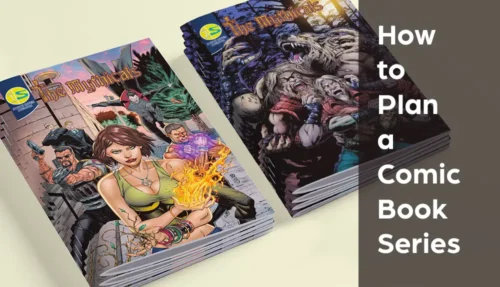

10 thoughts on “How to Make a Coloring Book to Sell”
Do I need to put my book in digital format to have it printed
Hi Frances,
Thanks for your question. Yes, you'll need to create a digital file to prepare your book and artwork for printing. So, please save your file as a press-quality pdf and ensure that each image has a resolution of 300dpi. If there's anything you're not sure about, just get in touch either by telephone, email, skype, or the contact form, and we'll be happy to explain to you in more detail. We look forward to helping you with your coloring book project!
I'm living in VietNam, what kind of license I need to have if I want to access and distribute my print book at US's bookstores.
Hi Amelia,
Thanks for your question.
First, you'll need an ISBN (International Standard Book Number). You can find out all about them by visiting https://www.isbn-international.org/
Then, although not mandatory, we suggest having corresponding copyright information and price barcodes printed on the inside and back cover respectively.
Most importantly, you need to make sure that stores in the US are willing to accept your books. And if you are not printing in the United States, you need to import the books to the United States first.
It's not easy, but you might be able to find an international book distributor who can handle the logistics of getting your book into the hands of retailers.
Many bookstores have different requirements for accepting books, so it's advisable to stay updated on any changes in publishing and distribution guidelines.
We hope that helps! If you have any further questions, please ask.
When it comes to preparing the final document for printing, what kind of Color mode is required - CMYK or is a RGB mode sufficient ?
Hi Cassie. How're you doing? RGB is meant only for visualizing images on the screen. For print, you'll need either to design in CMYK or convert to CMYK before you export your files. We wrote an easy-to-understand guide to color spaces which you may find useful: https://www.qinprinting.com/cmyk-and-rgb/ If you have further questions, please feel free to shoot us an email at [email protected] and we'll be happy to offer you all the help and advice you need with your coloring book. 🙂
Hallo,
in welchen Format lege ich denn die Druckdateien an, wenn ich sie bei ihnen drucken lassen möchte.
Hallo,
Sie müssen Ihre Dateien als druckfertige PDFs mit einem Beschnitt von 3 mm, Bildern in hoher Auflösung (300 dpi) und Farben in CMYK exportieren. Wir haben jedoch einen unserer Experten gebeten, Ihnen eine E-Mail zu senden, damit Sie direkte Hilfe und Unterstützung erhalten können. Wenn Sie noch weitere Fragen haben, fragen Sie einfach!
I would like to prepare children's colouring book.
Hi Sushila, thanks for your message. We're delighted to learn that you want to prepare a children's coloring book. It's an excellent idea and with a good concept, well-chosen artwork, and professional printing, it can lead to a profitable side income, too! We'd be happy to help you explore your ideas and take the next steps. One of our experts will get in touch with you via email with a few more details and to offer you the opportunity to take things forward. Thanks again for reaching out!